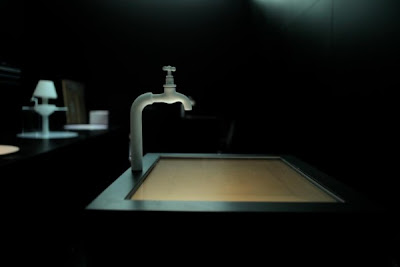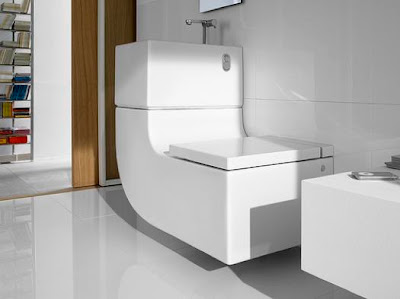The Roca Barcelona Gallery.
More
than 40 objects that reflect different views from our relationship with water.
Designed and curated by Hector Serano, the exhibition addresses the topic of
water usage by showing some of the contributions made by designers to solve related
issue such as drinking water and it’s transportation. By encouraging play and interation with the objects it highlights the role of
design as an essential tool to start a dialogue between human beings and water.
A reuseable collapsible water container in fabric, by Lola Llorca,
The other exhibits include the floating waterproof lamp, Metalarte by Hector
Serrano. Dramprom luminaire by Roger Arquer, a glass lamp shade which is blured the by condensation heated by the light source. The liquid absorbent paper calendar Ink Calendar by Oscar Díaz. The
pitcher Table Tap, Arnout Visser for Droog, inspired by elements of a scientific laboratory
and the Grey water reusing W + W toilet designed by Gabriele & Oscar Buratti and Roca Innovation Lab, which combines both sink and toilet in one piece that reuses waste water for flushing,
reducing both water consumption and space. (below)








